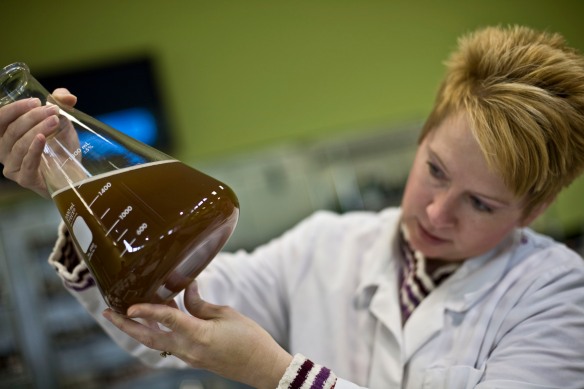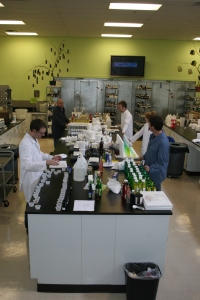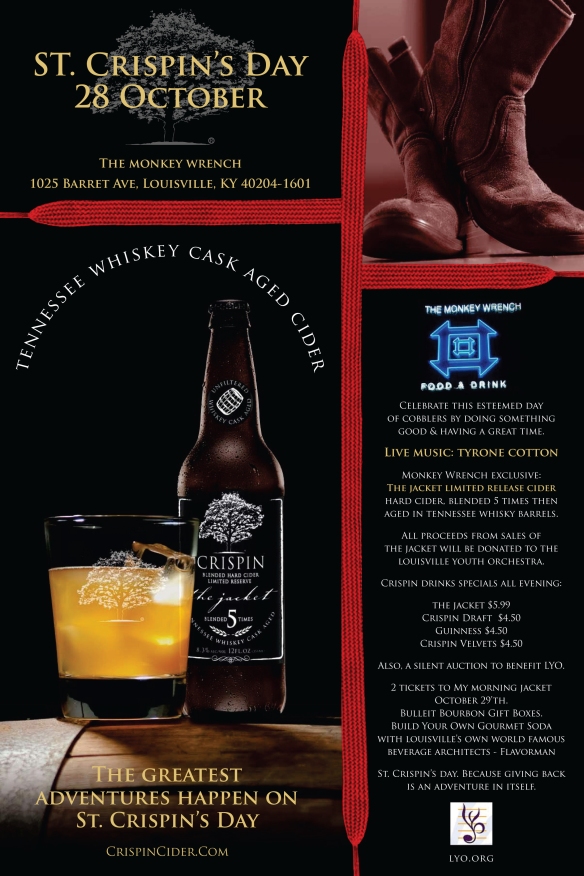 With beverages that claim to help to kick-start the day, ensure a good night’s sleep and perhaps even shave off a pound or two, it seems that a person can find any elixir for any ailment. Now, it might even be possible to down the contents of a can in order to become smarter. From the slightly gimmicky to the intensely scientific, a smattering of new cognitive beverage offerings aim to help everyone deal with today’s increased workload, family demands and 24/7 media blasts in an allegedly more calm and focused manner. Can these so-called “brain beverages” turn anyone into an instant PhD? Probably not, but they certainly want to help provide a bit of mental clarity and focus for all the average Joes who work the 9 to 5 – sorry, the 8 to 6 shifts.
With beverages that claim to help to kick-start the day, ensure a good night’s sleep and perhaps even shave off a pound or two, it seems that a person can find any elixir for any ailment. Now, it might even be possible to down the contents of a can in order to become smarter. From the slightly gimmicky to the intensely scientific, a smattering of new cognitive beverage offerings aim to help everyone deal with today’s increased workload, family demands and 24/7 media blasts in an allegedly more calm and focused manner. Can these so-called “brain beverages” turn anyone into an instant PhD? Probably not, but they certainly want to help provide a bit of mental clarity and focus for all the average Joes who work the 9 to 5 – sorry, the 8 to 6 shifts.
“Our target is everyone, software engineers, technologists, academic professionals – many outside of the ‘geek’ world who need to increase their focus and mental ability,” explained Brett Lemker of Brain Toniq – a beverage that describes itself as “the clean and intelligent think drink.” And from what Lemker says, Brain Toniq is a drink to help the average American get through the day a little more effectively.
“We live in a time frame where an increasingly larger segment of the population needs to be intelligent workers,” Lemker said. People must “maximize focus, [and] come up with new ideas. [They’re] multitasking, analyzing, brainstorming.” He added that such activities “all require intense mental focus” and that the beverage “tries to cater to everyone.”
Similarly, ZUN founder and CEO Brian Stearns explained via email that, “the cognitive health segment of functional beverage has great potential to dominate shelf space.” He added the company hopes that the consumer will understand the premise: “if you energize the brain your body will follow.”
At 80 calories for a 8.4 oz. can, Brain Toniq is just a touch lighter than Red Bull, but it still holds 20 grams of sugar from Agave nectar. ZUN, on the other hand, seems more like a soda in its rocket-shaped 12 oz. bottle, but the beverage hopes to pack a mental punch with caffeine, taurine and coenzyme Q10, in addition to its 500 percent of the daily value of vitamin B12 and 100 percent daily value of Vitamins B6, E and C.
In contrast, Brain Toniq incorporates more exotic ingredients that it claims enhance brain function. Its list includes Siberian Ginseng, Rhodiola root powder, and DMAE, which, according to the company website, is a “is a natural-occurring substance” that facilitates the “production of acetylcholine, that crucial neurotransmitter responsible for carrying messages between brain cells.”
However, for a real dose of science to go with this potentially new afternoon pick-me-up, Dr. Rob Paul of Nawgan wants to take the consumer back to the lab. “Nawgan started as a science entity with an interest to bring science to the market,” Paul explained. With ingredients like acetylcholine, commonly found in Alzheimer’s disease treatments, and lycopene which may help reduce oxidative stress and reduce inflammation, the beverage almost needs an accompanying encyclopedia. However, Paul said that Nawgan’s composition is the result of careful scientific planning and the right kind of balance.
“The ingredients are selected at doses that hit a therapeutic window,” he explained, “one that reaches high enough levels with biological meaning, but not too high that there are potential side
effects of interactions with other medications or supplements.”
For the general public, this may be a little tough to swallow, so Nawgan has planned “fun and creative marketing campaigns” including what Paul describes as “playful” print ads and memory games and tests through the website. “The marketing needs to be strategically defined as not too medicinal,” he explained. “Our job is to take science that people may be less familiar with and apply it to marketing.”
While Lemker says Brain Toniq is waiting for growth before kicking off major marketing campaigns, and ZUN is building its name through “visibility and trial,” the Nawgan team seems to have the most calculated approach so far – hardly surprising since the company is helmed by a bunch of scientists. But while all three cognitive beverages have high hopes for their products, can it be too early to tell whether or not there is a market for brain boosters?
Paul doesn’t seem to think so, citing the aging population and baby-boomers as two groups that may be interested in enhancing their mental capabilities. “I think the category has a lot of age possibilities,” Paul said. “We have really focused on adult market.”
Other brain beverages on the market include a suite of SKUs from a variety of functional lines, including Neuro and vitaminwater. Other drinks that feature l-theanine have long been thought of as focus enhancers, although they are not sold with the idea that they will improve brain health over the long term. And the entire category took a shot in the early spring of 2009 when function: brainiac was featured in a story on ABC News 20/20. In a less-than-scientific comparison, the drink did not appear to enhance retention or cognition, although the story did not create a laboratory-worthy environment.
That may be why the rollout has been slow nationally. Currently, most brain-boosting brands only have distribution in very select U.S. markets. Nawgan is currently being distributed by Major Brands in St. Louis and Brainwave in Arizona. Brain Toniq is now being sold in Vitamin Shoppe stores and is being distributed by UNFI, Tree of Life, Natures Best, Altura Distributors, and Azure in Oregon, according to Lemker. He adds that the brand is looking to make its official launch at Expo West. Likewise, ZUN is sold in 13 states through Kum & Go and is experiencing local distribution by New Age Beverage out of Denver, Colorado. But it’s still early days for these companies and whether cognitive beverages can take off in a big way is another story entirely, peppered with plenty of “ifs.” As more competition emerges and pushes the category out of fad territory and into the mainstream, witness the growth of NERD, for example, in the South, perhaps we could be looking at a wiser, more productive America. Then again, the beverages might just be a better way to get a few extra vitamins and afternoon caffeine boost. Now that’s certainly something to wrap your head around. •
Editor’s Note: This article also ran in the March 2011 issue of Beverage Spectrum Magazine.








